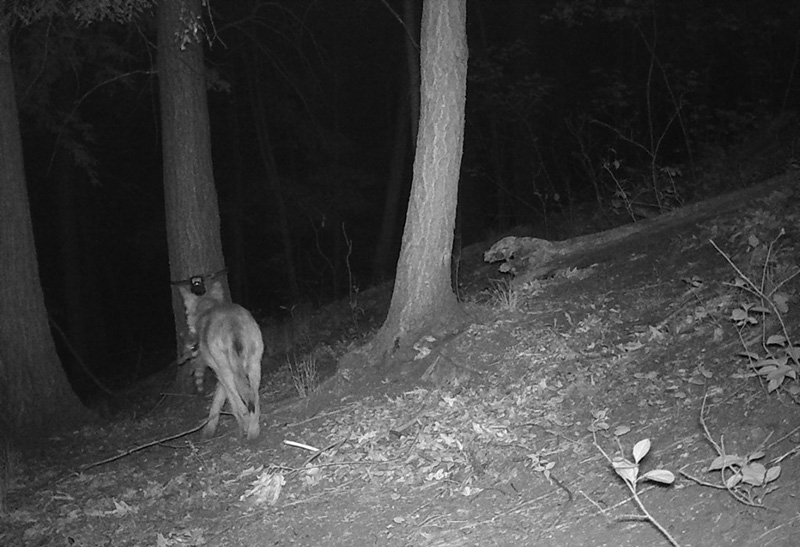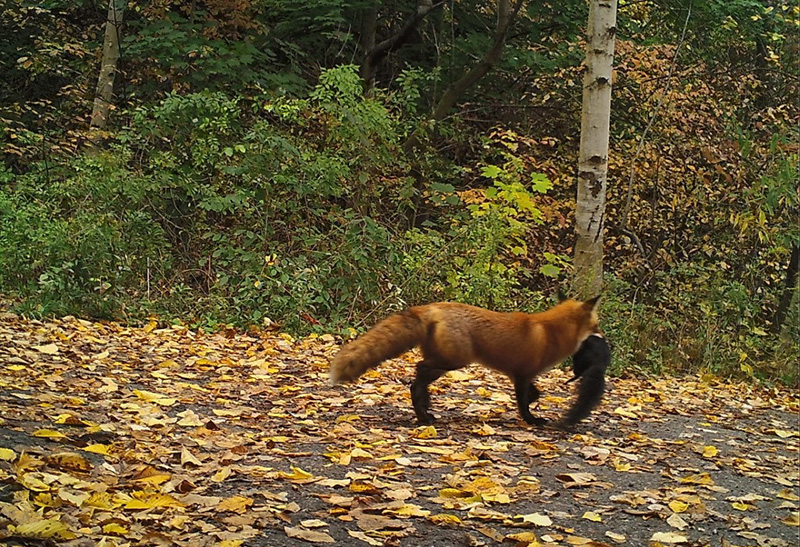“Toronto has a lot of wildlife,” says Tiziana Gelmi Candusso. “We don’t always see them because they're mainly nocturnal, but we have so many species of mammals detected in our cameras, from small chipmunks to large deer. Most are in the ravine system and because we have such an intricate ravine system in the city, many species are present virtually everywhere.”
Gelmi Candusso, a postdoctoral fellow in the Faculty of Arts & Science's Department of Ecology & Evolutionary Biology (EEB) and School of Cities, has an intimate knowledge and understanding of the fauna living amongst us. She studies how urban mammals select their habitat, how they travel and how different species interact — both through animal-animal and plant-animal interactions.
Among the research tools Gelmi Candusso and her collaborators use are camera traps — remote cameras placed in the field, with shutters triggered by the movement of animals. They offer advantages over research tools such as GPS collars — which require animal trapping — and labour-intensive data-gathering techniques that depend on collecting scat or hair samples.
In a paper published in the journal Food Webs, Gelmi Candusso and her colleagues describe how they tested the effectiveness of these devices in gathering data about coyote and fox predation.

Gelmi Candusso's co-authors on the paper included graduate students Chris Brimacombe and Germain Collinge Ménard, and Professor Marie-Josée Fortin — all with EEB. Gelmi-Candusso is a member of Fortin’s lab and is also funded through the Deutsche Forschungsgemeinschaft Research Fellowship, Fortin Canada Research Chair, and the contribution by Péter Molnár, an associate professor at U of T Scarborough, for a portion of the cameras. Since May, Gelmi Candusso has also been part of the School of Cities postdoctoral fellowship program.
The team used 33 cameras located throughout the Greater Toronto Area with many located along the shore of Lake Ontario east of the downtown area, the Don River Valley north of the city and the Humber River valley. Their study looked at images captured between October 2020 to September 2021 which included 2361 images of foxes and 1195 of coyotes.
Out of those, Gelmi Candusso and her collaborators found 43 images in which coyotes and foxes carried prey in their mouths. For coyotes, that mostly meant mice, voles, rabbits and squirrels; for foxes, it was birds, rabbits, squirrels and small rodents.
They also looked at separate images of predators and prey species that were taken by the same camera less than five minutes apart, reasoning that the proximity of the animals could lead to a predation event. They found 299 such encounters.

In analyzing their photographic “catch,” Gelmi Candusso and her collaborators found their camera trap data to be consistent with previous studies using other data-collection methods. They also found that the predation and potential predation images were complementary, as predation images underestimated the number of large mammals caught, and potential encounter events underestimated the number of small mammals caught.
To explain how the underestimations occur, Gelmi Candusso says, “When using predation events to understand predator-prey interactions, we often miss those prey that are hard to distinguish when carried and those that are not carried at all, while potential encounter events will miss species outside our detection range, such as mice and voles.”

Also, as a result of the study, the researchers gained insight into how to use the cameras more effectively in future investigations.
“One of the key things we found was that the micro-habitat — what was going on in the immediate vicinity of the camera — had a big influence on what we captured,” says Gelmi Candusso.
For example, a nearby bird feeder could result in more potential encounter events because the feeder can act as an attractant for both predator and prey; so too the camera’s proximity to trails which coyotes and foxes seem to prefer over travelling through dense undergrowth.
And for potential predations, the study suggests a more accurate representation of effective predator-prey interactions can be obtained by lowering the time interval threshold considered between separate images of predator and prey, as well as looking at only those images where the prey precedes the predator.
While Gelmi Candusso and her colleagues were happy to capture many images of coyotes and foxes, some Torontonians regard these predators as unwanted neighbours. For those feeling any trepidation, Gelmi Candusso has an assuring message.
“These predators play an important ecological role in our city,” she says. “They control the rodent and small mammal population, as well as other mesopredators, supporting balance in the ecosystem. And if there’s a healthy population of coyotes and foxes, then they can fulfil their role effectively.”

